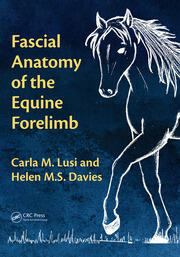Equine pythiosis is characterized by the development of cutaneous, subcutaneous, lymphatic vessels, intestinal, granulomatous lesions and less frequently by the involvement of bones and lungs (chronic pythiosis). Lesions caused by P. insidiosum can occur on any anatomical area, but it is more common on the lower limbs because they first come in contact with the organism in infested environments (stagnant water, grasses). The lesions often occur as a single lesion, but cases with multiple granulomas have been encountered. There are no reports of animal to animal, or animal to human transmission of this pathogen. If the disease is not treated in the early stages (usually surgical removal of the granulomas) it becomes life threatening. In most cases chemotherapy with antifungal drugs is not helpful.

A Trojan Horse, in the computer world, is a potentially devastating type of malware that disguises itself as something desirable in order to be installed or downloaded onto a computer system. Once the Trojan program has been installed, it goes to work with its true purpose, executing malicious activities that greatly compromise the overall security of the system. If your Mac has been infected. Get more done with the new Google Chrome. A more simple, secure, and faster web browser than ever, with Google's smarts built-in. Veronica Blume is a recently divorced 29-year-old woman whos down on her luck. She has a meaningless job and no real friends to turn to. Her only savior is her sister, whos happily married and busy raising her own family. Veronica feels isolated from happiness. Everything that represents her life is.
Lesions on the limbs are characterized by the formation of tumoral-like masses with fistules and a serosanguineous discharge. Lesions on the thorax, abdomen, and shoulders, tend to be circular, 5 to 500 mm in diameter. Ulceration and pruritus (itch) is commonly associated with large lesions on these sites. The formation of small hard coral-like masses termed 'kunkers' is an interesting characteristic of the disease in equines. These stony masses contained the viable hyphae of P. insidiosum surrounded by cell detritus from degranulated eosinophils. Metastasis (spread) from distant lesions, through lymphatic vessels to regional lymph nodes, lungs, or bones have been reported. As in dog pythiosis, intestinal equine pythiosis is more likely to be acquired from direct inoculation of the organism through ingestion, than spread from distant lesions.
Histopathologically, in early equine pythiosis, abundant microabcesses with eosinophils a few neutrophils, lymphocytes, and macrophages are present. In chronic cases, an eosinophilic granuloma with giant cells is observed. In the center of the microabcesses, stony masses (kunkers) are often present. With PAS and Silver stains P. insidiosum appears as sparsely septate hyphae 6 to 10 mm in diameter.
TREATMENT - SURGERY The most common treatment of equine pythiosis has been the surgical removal of the lesions. This method is very popular and frequently used by veterinary practitioners. In general the response to surgery is limited (40%). A common drawback of surgical treatment is its high rate of recurrence. This is mostly due to the incomplete removal of the P. insidiosum hyphae from the affected tissues. More importantly, lesions of the limbs are very difficult to treat by surgery due to the presence of key anatomical structures in these areas.
Equine Escapades Mac Os X
CHEMOTHERAPY Two main groups of antifungal drugs have been used to treat pythiosis: Iodine and amphotericin B. Both drugs, however, have given contradictory results. For instance, some practitioners reported that iodine had cured the disease after intravenous injections, whereas others reported failures with the same procedures. In theory, owing the fact that this pathogen does not have ergosterol in its cytoplasmic membrane (target of the drug) amphotericin B should not work on P. insidiosum. Nevertheless, the drug has been used with some success in equine pythiosis. The use of drugs in pythiosis has been limited because of cost, poor success rate, and high toxicity.
Equine Escapades Mac Os Catalina
IMMUNOTHERAPY In the early 80's a therapeutic (curative) vaccine against P. insidiosum infections in equines was developed in Australia and Costa Rica. This early immunotherapeutic vaccine cures 100% of the acute cases (less than 15 days after infection) but it fails to cure chronic equine pythiosis (two month and more after infection). It was found that chronic cases often become anergic due to the lost of large quantities of proteins, electrolytes and water through the open wounds. Thus, the immunotherapeutic vaccine works better in equine with intact immune system (early pythiosis).
A new formulation of this therapeutic vaccine has been introduced by us and PavLab (www.pavlab.com). This new formulation cured 50% of the chronic cases that the early vaccine failed to cure. The overall rate of cure of this vaccine (acute plus chronic cases) was 75%. The vaccine cured a case of human pythiosis in a Thailand boy with pythiosis in his arteries (Clin. Infect. Dis. 27:1394;1998).

